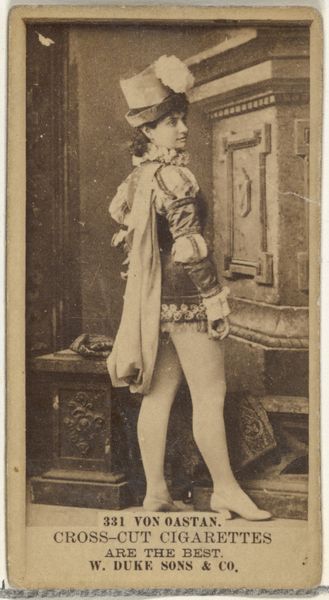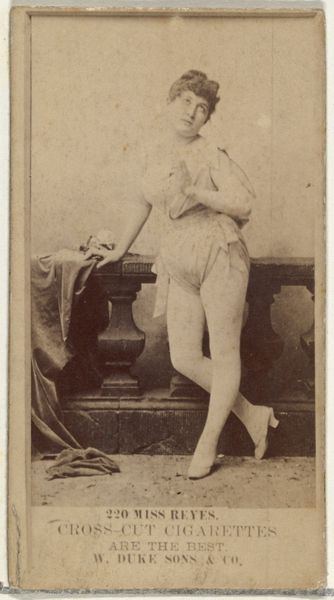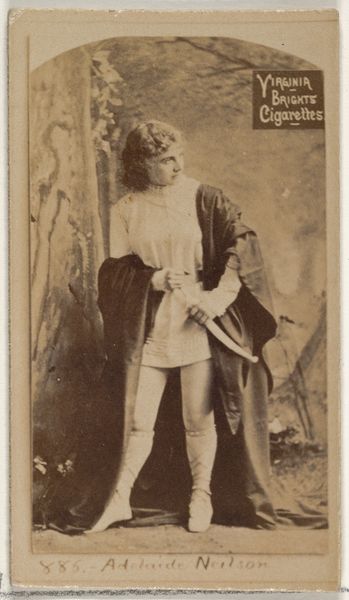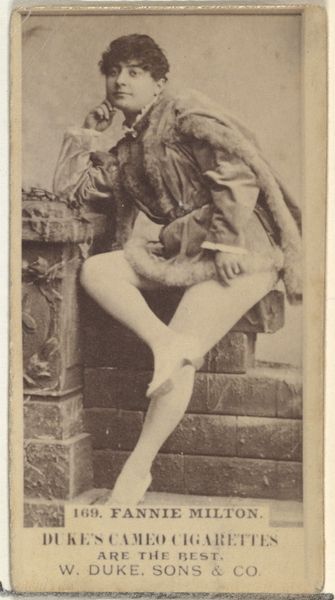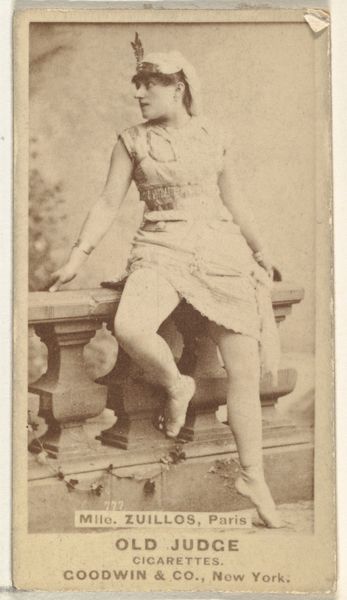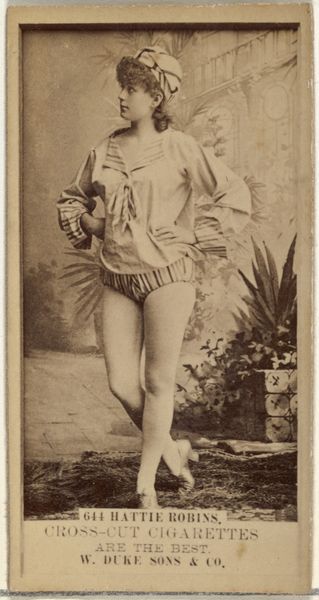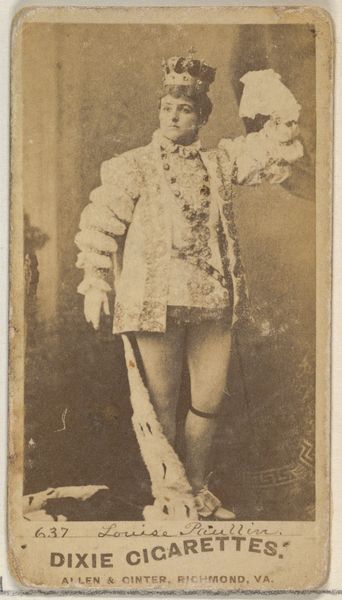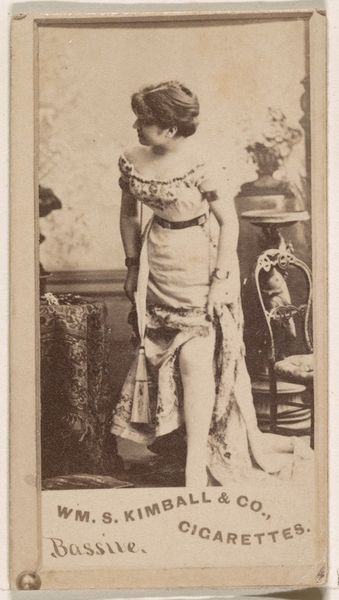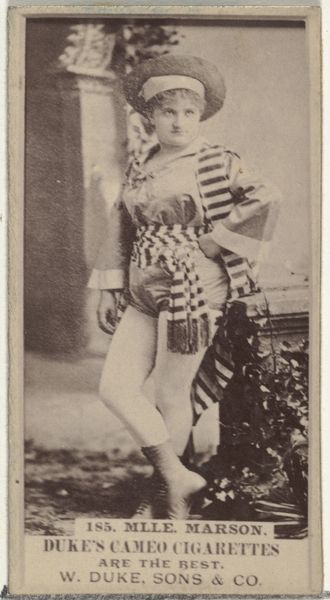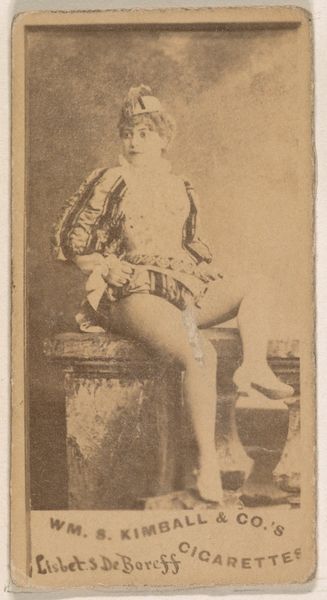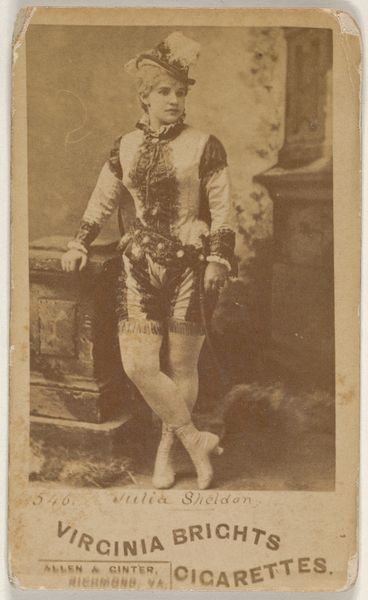
Card Number 320, Laura Burt, from the Actors and Actresses series (N145-3) issued by Duke Sons & Co. to promote Cross Cut Cigarettes 1880s
0:00
0:00
Dimensions: Sheet: 2 11/16 × 1 3/8 in. (6.8 × 3.5 cm)
Copyright: Public Domain
Curator: Here we have card number 320 from the "Actors and Actresses" series produced by Duke Sons & Co. in the 1880s. It features Laura Burt and was a promotional item for Cross Cut Cigarettes. Editor: What immediately strikes me is the oddity of the costuming—and of using such elaborate photography for cigarette marketing. There’s a performative aspect that clashes intriguingly with the everyday act of smoking. Curator: Absolutely. These cards were designed to be collected and traded, similar to baseball cards today. They tapped into the popularity of theater and celebrity culture to market a very specific product. The materiality of the card itself, thin cardboard, mass-produced… it’s designed for widespread distribution, a deliberate strategy to associate their brand with fame and artistry, however indirectly. Editor: It's the layering of artifice, isn't it? Laura Burt is presented in theatrical garb, posing against a manufactured backdrop—all reproduced via photography, printed, and disseminated as disposable ephemera. The costume looks almost haphazardly assembled, almost certainly chosen more for its theatrical effect than accuracy. It raises questions about authenticity and the commercialization of performance. Curator: And the implications for the working actress! This wasn't just about selling cigarettes; it was about associating the product with the perceived glamour and excitement of the stage. Yet, actors, then as now, were often precariously employed. These cards democratized access to images of famous figures but also exploited their likenesses for commercial gain. We might ask, what were Laura Burt's compensation or rights concerning this distribution of her image, and how might this exemplify the socio-political context surrounding the marketing of stage and popular imagery during that time? Editor: Thinking about the mass production—it brings into stark relief how this imagery was essentially disposable yet designed to be enticing. What chemicals were used to create that sepia tone? Who operated the presses? All of this points to a wider labor system dependent on creating aspirational items from inherently unhealthy materials. Curator: Exactly. The card connects celebrity, commerce, and labor within a burgeoning consumer culture. It speaks volumes about how fame was packaged and sold. Editor: And the strange dance between representation and reality. The "reality" of this item is a tiny piece of processed cardstock peddling addiction. And the illusion is a stage actor's image promoting the allure of smoking and spectacle. A pretty telling picture about a society entering consumerism. Curator: It’s a complex little rectangle—so much cultural history packed into a single image designed to be tossed away. Editor: Indeed. And quite thought-provoking how something so seemingly insignificant can offer such a rich glimpse into that world.
Comments
No comments
Be the first to comment and join the conversation on the ultimate creative platform.

